Ben Hogan Golf's Greatest Comeback
Ben Hogan's heroics in the 1950 US Open resulted in one of the most impressive Major victories of all time
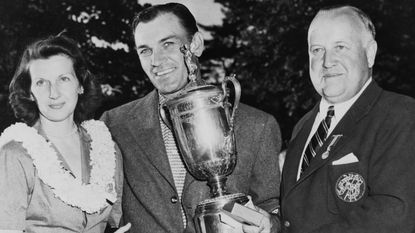

The fact that Ben Hogan even played in the 1950 US Open at Merion is incredible, as 16 months earlier he almost died in a car crash. That he won is beyond belief. It's an amazing story and cemented Hogan as a golfing legend.
Ben Hogan was something of a late bloomer as a professional golfer. Born in 1912, just months after Byron Nelson and Sam Snead, the early part of Hogan’s career was tough in comparison to his famous rivals, both of whom had won more than ten tournaments by the time Hogan claimed his first.
Hogan turned pro in 1930 at the age of 17, a year before Snead and two years before Nelson, but it wasn’t until 1940 that the Texan won his first individual professional event. He spent his first years in the paid ranks as a poorly remunerated club pro and more than once found himself flat broke. But he had great support from his girl, and from 1935 wife, Valerie, who always believed in him. Without her support he might have been inclined to throw in the towel.
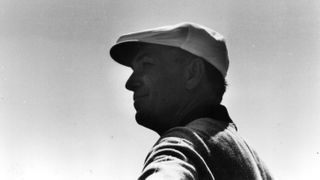
"The Hawk"
But he persevered and, after that first victory, the floodgates opened. Hogan won at least four events on the circuit every year he played between 1940 and 1948 (he served as a US Army Air Forces pilot stationed at Fort Worth between 1943 and 1945). In 1948, Hogan established himself as the dominant figure on the US professional scene. He won an incredible ten tournaments, including the US Open and the USPGA Championship.
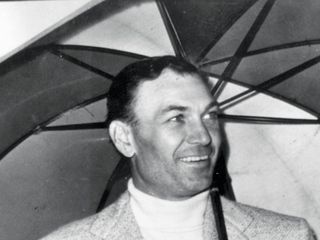
The following year looked set to be another belting season for ‘The Hawk’. At the start of 1949, he won the Bing Crosby Pro-Am and the Long Beach Open in a play-off against Jimmy Demaret. Amazingly, he had won 11 times in 15 starts. The following week in the Phoenix Open, Hogan once again found himself in an 18-hole play-off with Demaret, one that he narrowly lost.
But the play-off was significant as it delayed the Hogans’ drive home to Fort Worth by 24 hours. If that hadn’t happened, they might not have faced foggy, and possibly icy, conditions on the high road between Van Horn and Kent, and they wouldn’t have encountered impatient Greyhound bus driver Alvin Logan who decided to try and overtake a lorry on a blind corner and ploughed headlong into their Cadillac.
When Ben saw the headlights coming towards him, and there was no way of avoiding collision, he threw himself over Valerie’s lap to protect her from the impact. He did so effectively, and she suffered no serious injury. He, however, didn’t fare so well: a broken pelvis, collarbone, ankle and crushed rib plus multiple cuts and bruises.
Get the top Black Friday deals right in your inbox: Sign up now!
The hottest deals and product recommendations during deals season straight to your inbox plus all the best game-changing tips, in-depth features and the latest news and insights around the game.
Seeing the condition of the wrecked car, early eyewitness reports suggested Hogan had died. He hadn’t, but he wasn’t in good shape. Fellow pro Herman Keiser went to see him the following day and on first sight believed his colleague wasn’t going to make it. He was given more cause for optimism when Hogan managed to whisper a few words: “Herman, would you check on my clubs?”
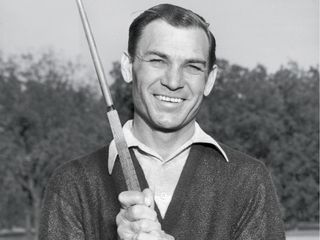
Despite the severity of his injuries, Hogan made good progress in his recovery. But things were set back considerably when he suffered a blood clot that required emergency surgery and left him with his largest vein, the vena cava, permanently closed. Hogan was consigned to a lifetime of poor blood circulation to his legs. He would have severe difficulty walking, let alone playing, 18 holes.
Road to recovery
He was a man of incredible determination, though, and possessed a profound desire to get back to the sport he had worked so hard to forge a career in. He was chipping and putting by May 1949 and it would later emerge that he had sent a pre-emptive entry form for the 1949 US Open, although there was no chance of him recovering sufficiently to make it. In late 1949 Hogan captained an understrength US Ryder Cup team to victory at Ganton and, on his return from the UK, he began to hit full shots.
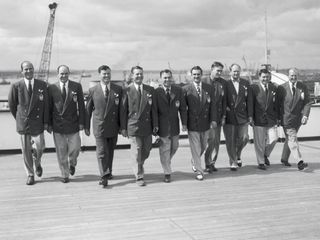
Despite this, many believed Hogan would never play competitively again. In December Jimmy Demaret told the press at the Miami Open he felt Hogan wouldn’t make a comeback. A month later, Demaret was playing with Hogan in practice for the Los Angeles Open.
Incredibly, despite having been away from competition for almost a year, Hogan finished four rounds at Riviera in a tie for first place with Sam Snead. Although he lost the 18-hole play-off, it was a phenomenal effort for a man who could still barely walk those 18 holes.
By the time of the 1950 US Open at historic Merion, there was no doubt that Hogan was back and could still be competitive – he had finished in a tie for fourth at The Masters and won the unofficial Greenbrier Pro-Am by ten shots. He was mentally ready, but would his body stand up to the rigours of a US Open around an extremely difficult golf course?
Before each round at Merion, Hogan soaked for an hour in a hot bath filled with Epsom Salts. After that he wrapped each leg in bandages (which reduced the swelling but made him extremely hot in the sweltering conditions) and then took Aspirin to dull the pain. But he tried to keep the discomfort to himself, as he didn’t want to show weakness.
In round one, Hogan opened with a two-over-par 72. It left him in a tie for 18th, fully eight shots behind unattached, unknown pro Lee Mackey from Alabama. Mackey shot a tournament-record 64 and was swamped with requests for interviews by newspaper and radio. The pressure of being thrust into the limelight proved too much for Mackey and he followed up with an 81. He faded back into obscurity and played just twice more in the US Open.
Hogan moved in the other direction in round two. His 69 put him just two shots off PGA Tour stalwart Dutch Harrison’s lead at the halfway stage. However, his legs were cramping terribly and he faced 36 holes the following day. It later emerged he told Valerie he feared he would be unable to finish.
Defying the pain
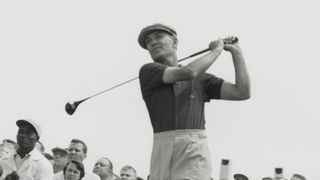
Hogan had a classic swing
Thankfully for Hogan, given his laborious pre-round preparations, his third-round tee time was 9.30 (the first players went out at 8.00). If he had started first, he would have had to get up at about 4am.
After round three, Hogan was still two shots off the pace following a battling 72. Now it was Lloyd Mangrum who headed the pack after a fine 69 put him one-over-par. Mangrum had won the 1946 US Open and been a prolific winner on the PGA Tour. He had also played twice in the Ryder Cup. Harrison was one back after a 73 and defending champion Cary Middlecoff was tied with Hogan on three over.
On the fringes of contention, six shots back, was a less well-known player called George Fazio. The Pennsylvanian had never finished better than tied for 25th in the US Open. The scrap-metal dealer and future course architect received little attention as the players took their breaks between rounds.
But, amongst the early starters in round four, Fazio began solidly with six straight pars. He dropped one at the 7th but got it back to even par on the back nine. He ground out a level-par 70 for a four-round total of seven-over-par. It looked to be a good effort but surely a target the leaders would better.
It didn’t happen. Mangrum made a terrible start, going out in 41. He appeared spent, but he composed himself somewhat on the back nine and came back in 35 for a 76 and a four-round score of 287 – tied with Fazio.
Harrison also stumbled to a 76 and Middlecoff fell away with a 79. It was down to Hogan. The Hawk made the turn in 37 and, at four-over-par, was three ahead. But he dropped shots at the 12th and 15th. Hogan’s legs had seized up so much that he couldn’t bend down to pick his ball out of the hole. When another stroke went at the 17th, Hogan looked to be in trouble. He needed par at Merion’s notoriously difficult 18th hole to join Mangrum and Fazio in a play-off.
He played a good tee shot on the 457-yard hole, but was left with over 200 yards for his second. He considered a 4-wood but settled on a 1-iron. He proceeded to hit one of the most iconic shots in golf’s history – a majestic stroke that ended on the green and set up a two-putt par. Defying the pain, Hogan had tied Mangrum and Fazio. The competition would be decided by an 18-hole play-off the following day.
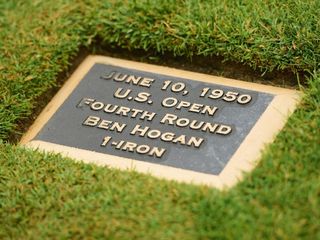
Those who knew the extent of the discomfort Hogan was in would surely have doubted whether he had the strength to deliver the goods in another round at Merion. But Hogan was made of incredibly stern stuff. He played a brilliant round of 69 to beat Mangrum by four and Fazio by six. The Texan had completed his remarkable comeback: from near death to national champion in the space of 16 months. It remains one of the most incredible sporting achievements.

Fergus is Golf Monthly's resident expert on the history of the game and has written extensively on that subject. He has also worked with Golf Monthly to produce a podcast series. Called 18 Majors: The Golf History Show it offers new and in-depth perspectives on some of the most important moments in golf's long history. You can find all the details about it here.
He is a golf obsessive and 1-handicapper. Growing up in the North East of Scotland, golf runs through his veins and his passion for the sport was bolstered during his time at St Andrews university studying history. He went on to earn a post graduate diploma from the London School of Journalism. Fergus has worked for Golf Monthly since 2004 and has written two books on the game; "Great Golf Debates" together with Jezz Ellwood of Golf Monthly and the history section of "The Ultimate Golf Book" together with Neil Tappin , also of Golf Monthly.
Fergus once shanked a ball from just over Granny Clark's Wynd on the 18th of the Old Course that struck the St Andrews Golf Club and rebounded into the Valley of Sin, from where he saved par. Who says there's no golfing god?
-
 This Award-Winning 5-Star Resort Is The Perfect Place To Stay If You're Playing England's Most Famous Inland Golf Courses
This Award-Winning 5-Star Resort Is The Perfect Place To Stay If You're Playing England's Most Famous Inland Golf CoursesGolf Monthly's content director Mike Harris visits Pennyhill Park in Surrey - a luxurious place to stay if you're playing golf in the south east of England
By Mike Harris Published
-
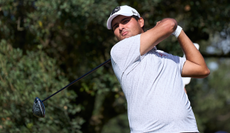 'There Are Other Teams And My Agent Is Talking' - Eugenio Chacarra Hoping To Find New LIV Golf Team
'There Are Other Teams And My Agent Is Talking' - Eugenio Chacarra Hoping To Find New LIV Golf TeamThe Spaniard finished in 'The Open Zone' following the 2024 LIV Golf season, and is hoping his recent run of form can land him a place in a side for 2025
By Matt Cradock Published
-
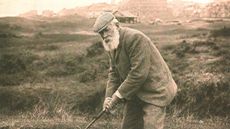 How Far Did Old Tom Morris Drive The Golf Ball?
How Far Did Old Tom Morris Drive The Golf Ball?Old Tom Morris became a golfing legend in the second half of the 19th century, but how far could he hit the golf ball?
By Fergus Bisset Published
-
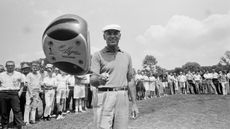 Injury, The Yips And No Form... How Ben Hogan Almost Pulled Off The Unthinkable In His Last Masters Appearance
Injury, The Yips And No Form... How Ben Hogan Almost Pulled Off The Unthinkable In His Last Masters AppearanceAt Augusta National in 1967, 54-year-old Ben Hogan rolled back the years with an incredible back nine of 30 in the third round of his final Masters
By Fergus Bisset Published
-
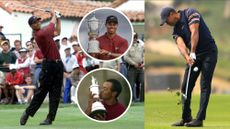 How Would The Unstoppable Tiger Woods Of 2000 Get On Against Today's Best Golfers? We've Crunched The Numbers To Find Out...
How Would The Unstoppable Tiger Woods Of 2000 Get On Against Today's Best Golfers? We've Crunched The Numbers To Find Out...In 2000, Tiger Woods played golf that seemed, and was at times, out of this world. Was it the best anyone has ever played? How would it compare to the best of today?
By Fergus Bisset Published
-
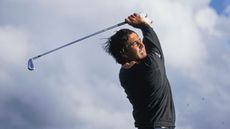 Seve Or Arnie, Who Did More For The Modern Pro Game?
Seve Or Arnie, Who Did More For The Modern Pro Game?Both men were inspirational, and both played a key role in the development of the professional game during the second half of the 20th century.
By Fergus Bisset Published
-
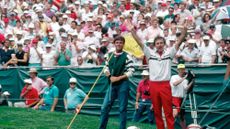 It Only Took 19 Play-Off Holes... The Amazing Story of Hale Irwin's Record-Breaking 1990 US Open Win
It Only Took 19 Play-Off Holes... The Amazing Story of Hale Irwin's Record-Breaking 1990 US Open WinHale Irwin came through a play-off to become the oldest ever US Open winner in an unlikely and highly memorable contest at Medinah
By Fergus Bisset Published
-
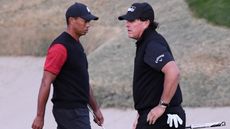 Woods Vs Mickelson – The Numbers Behind One Of Golf’s Great Rivalries
Woods Vs Mickelson – The Numbers Behind One Of Golf’s Great RivalriesWe take a look at the careers of two legends from the last 35 years of golf and compare some of the numbers behind their success.
By Fergus Bisset Published
-
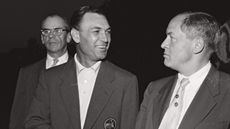 Ben Hogan Vs Bobby Jones – Who Had The Better Career?
Ben Hogan Vs Bobby Jones – Who Had The Better Career?One was the greatest swinger of a golf club, the other the greatest amateur and both of them achieved an enormous amount through their careers…
By Fergus Bisset Published
-
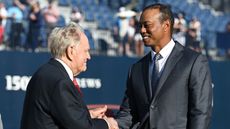 Is The Greatest Golfer Of All Time Tiger Woods Or Jack Nicklaus? We Dived Into The Stats To Try And Settle The Argument For Good...
Is The Greatest Golfer Of All Time Tiger Woods Or Jack Nicklaus? We Dived Into The Stats To Try And Settle The Argument For Good...Tiger or Jack? Who is the greatest of all time. The question is often posed and the answer will always be subjective, but we looked at the facts to try and come up with an answer...
By Fergus Bisset Last updated